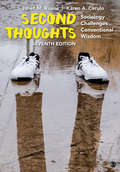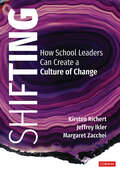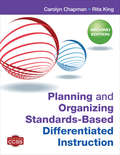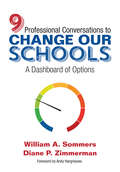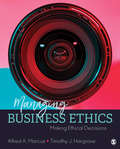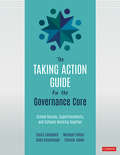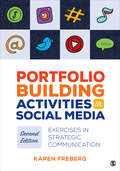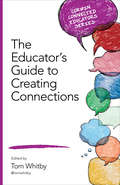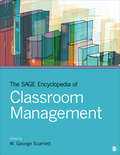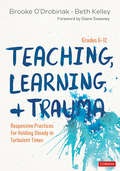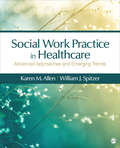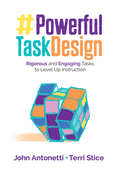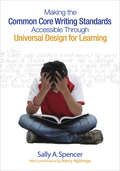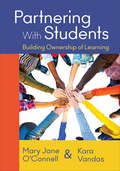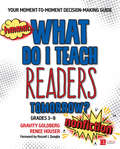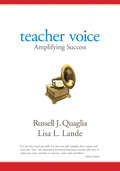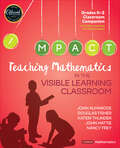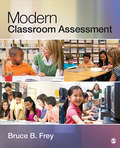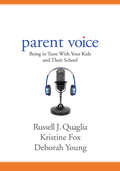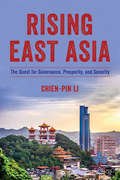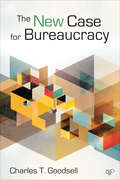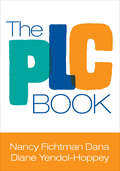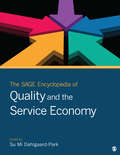- Table View
- List View
Second Thoughts: Sociology Challenges Conventional Wisdom
by Janet M. Ruane Karen A. CeruloIntroducing students to core sociological concepts by debunking popular misconceptions Is it true that "numbers don′t lie?" Is America "the land of equal opportunity?" Is marriage a "dying institution?" Oft-repeated adages like these shape our beliefs about the society we live in. Each essay in Second Thoughts reviews a conventional wisdom familiar to both instructors and students. The authors introduce relevant sociological concepts and theories in order to explain, qualify, and sometimes debunk that conventional wisdom. This unique text encourages students to step back and sharpen their analytic focus. 23 engaging essays reveal the complexity of social reality and demonstrate the role of sociology in everyday life.
Shifting: How School Leaders Can Create a Culture of Change
by Kirsten Richert Jeffrey Ikler Margaret ZaccheiEstablish a school change culture where desired outcomes are actually achieved Change in schools is hard, but often essential. Internal and external factors require careful analysis before jumping into any change. Are you prepared to work with colleagues with confidence and clarity through such shifts? In Shifting, educators and leadership experts Jeff Ikler, Kirsten Richert, and Margaret Zacchei empower educational change leaders to proactively and coherently navigate complex change in schools to achieve the desired outcomes. Using a three-part framework—Assess, Ready, Change—this book leads educators to examine a school’s imperatives and readiness for change, identity the tools and abilities required to manifest change, and take action by defining the roles and processes necessary to effectively implement both sweeping change and smaller day-to-day adjustments. Change leaders learn to · Shift the emphasis in the change process from procedure to the people implementing change · Move from an environment of "command and control" to one of leaders creating other leaders · Reframe change as an essential shift in school culture rather than a series of episodic events Rich with leadership insights, stories, podcasts, and hands-on activities, Shifting offers an integrated tapestry of wisdom and support for changemakers intent on meaningful collaboration in a positive, engaged workplace.
Planning and Organizing Standards-Based Differentiated Instruction
by Carolyn M. Chapman Rita S. KingWork smarter—not harder—for effective differentiation! Well-planned, on-target instruction that’s responsive to diverse student needs is a complex task every teacher strives for—especially in today’s classroom. Where do you start? Get expert guidance grounded in cutting-edge brain research from bestselling authors Carolyn Chapman and Rita King. This new edition of Differentiated Instructional Management helps you identify best practices and create positive classroom environments that optimize learning for individual learners. New and experienced teachers get numerous hands-on resources, including ready-to-use tools, agendas, checklists, organizers, and other graphics to facilitate Common Core–ready, standards-based instruction. Detailed strategies help you: "Zap" gaps in learning with 12 innovative planning models Motivate students through diverse approaches, including challenge, humor, respect, choice, and self-efficacy Identify and individualize teaching methods for students who are nervous, impatient, "turned off," or otherwise difficult to reach Organize differentiated lessons and routines in self assessment, journaling, portfolios, grading, and more Customize parent-teacher communications for students from diverse backgrounds Save time with targeted formative and summative assessments Loaded with innovative strategies that can be customized for teachers and students, Planning and Organizing Standards-Based Differentiated Instruction is your comprehensive toolkit that helps you meet the unique needs of all learners. Praise for the previous edition: "Each chapter assists the teacher in setting up and maintaining an effective learning environment through the use of differentiated learning and assessment, with suggestions that are practical and grounded in research." —Laura B. Harper, Adjunct Instructor and Supervisor of Student Teachers Trevecca Nazarene University "This book is loaded! It has every topic you ever wanted to know about differentiation." —Kael Sagheer, Fifth Grade Teacher Willa Cather Elementary School, Grapevine, TX
Nine Professional Conversations to Change Our Schools: A Dashboard of Options
by William A. Sommers Diane P. ZimmermanImprove collective efficacy in schools through meaningful professional conversations As technology substitutes for face-to-face connections, educators can feel like they’re practicing their craft in isolation. Nine Professional Conversations to Change Our Schools is a framework for revitalizing the art of the professional conversation. It guides educators through structures for collaboration, offers access to vast storehouses of applied wisdom, and facilitates a coherent knowledge base for standards of excellence. Readers will find nine conversational strategies designed to promote collective teacher efficacy learning scenarios that demonstrate the effectiveness of these conversations in action accessible Conversational Dashboard that assists in analyzing conditions for success Face-to-face conversational skill is a fundamental foundation for establishing effective relationships and collaboration. Drawing from their rich careers with coaching and facilitation, the authors of this book offer strategies that will expand your conversational repertoire and provide insight into how to respond meaningfully in an ever-changing environment.
Managing Business Ethics: Making Ethical Decisions
by Alfred A. Marcus Timothy J. HargraveManaging Business Ethics: Making Ethical Decisions teaches students how to navigate ethical issues they will encounter using the weight-of-reasons approach applied throughout the book. This decision-making framework’s goal is not to faithfully apply particular philosophical perspectives on what is right, but rather to solve ethical problems. The authors underscore the need for employees at all levels to carefully consider the ethical implications of their actions using this approach and it can be applied at the individual, organizational, and stakeholder levels. Chapters provide a case to walk through application of the framework and mini-cases allow students to practice applying this framework on their own. A wide range of real-world case studies are presented, featuring companies such as Facebook, Google, Wells Fargo, Volkswagen, and Amazon. This practical, down-to-earth text also delves into topics not covered extensively by other books such as slow and fast thinking, the inherent conflict between the individual and organization, conformity, and the difficulties of speaking truth to power. Students are offered ample opportunity to engage in thoughtful reflection, discussion, and application as they grapple with ethical issues big and small. Included with this title: The password-protected Instructor Resource Site (formally known as SAGE Edge) offers access to all text-specific resources, including a test bank and editable, chapter-specific PowerPoint® slides.
The Taking Action Guide for the Governance Core: School Boards, Superintendents, and Schools Working Together
by Michael Fullan Davis W. Campbell Babs Kavanaugh Eleanor AdamPractical resources for building cohesive governance teams As a supplement to the best-selling The Governance Core, this practical guide will help trustees and superintendents adopt a governance mindset and partnership that creates coherence throughout the district. With a systems thinking approach, the authors provide readers with the strategies and tools needed to build cohesive teams and engage in deeper learning and decision making. The Taking Action Guide for the Governance Core offers readers: • a deeper understanding of core governance and how to build it • a planning guide to help new trustees get started • protocols and sample agendas for focusing on strategy and systems during open board meetings Educational leaders will find this guide offers them a foundation for building strong, flourishing school districts that are equipped to adapt to and meet the daunting challenges of our time.
Portfolio Building Activities in Social Media: Exercises in Strategic Communication
by Karen FrebergFeaturing 125 real-world activities across various social media platforms! Portfolio Building Activities in Social Media shows students how to communicate on social media professionally and strategically by giving them hands-on experiences with real-world challenges. From brand analyses to budget assignments to pitch activities, this practical exercise guide offers students multiple opportunities to create and build their portfolio of work. Designed to be used with Freberg’s Social Media for Strategic Communication, but flexible enough to bundle with any PR textbook, these exercises are useful to any professor looking to incorporate more activities around social media and digital brand development.
The Educator′s Guide to Creating Connections (Corwin Connected Educators Series)
by Tom WhitbyBlogging, social media, and PLN’s made easy! Collectively, we’re all smarter than we are individually. In this expert guide, EdTech leaders help you harness the power of connected collaboration using the Internet and social media. You’ll easily leverage Twitter, Facebook, LinkedIn and beyond for profound professional growth. Use real-world tips and tools to: Master and adapt to 21st Century teaching methodologies Build ongoing technology literacy for you and your students Connect and collaborate with education leaders across the globe Get connected. Get engaged. Use this inspiring, step-by-step manual to expand your personal and professional network today! The Corwin Connected Educators series is your key to unlocking the greatest resource available to all educators: other educators. Being a Connected Educator is more than a set of actions: it’s a belief in the potential of technology to fuel lifelong learning. "The successful educator is a connected educator. Quite simply, this book is a manual to stay relevant and energized in a rapidly changing profession. I highly recommend this as the definitive guidebook on building connections for the modern educator." Vicki Davis, Author "Reinventing Writing" Tom Whitby has brought together a who′s who list any educator would want to be connected with and learn from! His latest book shares great ideas on how teachers can use online strategies as one way to look and learn beyond our all-too-often isolated classrooms. Larry Ferlazzo, Award-Winning Teacher, Blogger, and Author Helping Students Motivate Themselves
The SAGE Encyclopedia of Classroom Management
by W. George ScarlettA teacher’s ability to manage the classroom strongly influences the quality of teaching and learning that can be accomplished. Among the most pressing concerns for inexperienced teachers is classroom management, a concern of equal importance to the general public in light of behavior problems and breakdowns in discipline that grab newspaper headlines. But classroom management is not just about problems and what to do when things go wrong and chaos erupts. It’s about how to run a classroom so as to elicit the best from even the most courteous group of students. An array of skills is needed to produce such a learning environment. The SAGE Encyclopedia of Classroom Management raises issues and introduces evidence-based, real-world strategies for creating and maintaining well-managed classrooms where learning thrives. Students studying to become teachers will need to develop their own classroom management strategies consistent with their own philosophies of teaching and learning. This work aims to open their eyes to the range of issues and the array of skills they might integrate into their unique teaching styles. Key Features: 325 signed entries organized in A-to-Z fashion across two volumes Reader′s Guide grouping related entries thematically References/Further Readings and Cross-References sections Chronology in the back matter Resource Guide in the appendix This encyclopedia is an excellent scholarly source for students who are pursuing a degree or position in the field of education. The SAGE Encyclopedia of Classroom Management is an ideal source for all academic and public libraries.
Teaching the Last Backpack Generation: A Mobile Technology Handbook for Secondary Educators
by Zachary Walker Kara Rosenblatt Don McMahonDon’t just know how to use mobile technology. Know how to use it to transform learning. This refreshingly easy-to-use workbook shows how to make mobile devices a natural part of lessons, no matter the content. Discover practical device management skills, fun strategies students will love, and helpful resources to extend professional learning.
Teaching, Learning, and Trauma, Grades 6-12: Responsive Practices for Holding Steady in Turbulent Times
by Brooke O’Drobinak Beth KelleyTransform challenging classroom experiences into opportunities for lasting student-teacher relationships, professional growth, and student engagement Chronic stress, anxiety, and trauma have startling effects on teachers and students. The pandemic and distance learning have exacerbated behavior issues and emotional dysregulation, making it difficult for students to engage, learn, and maintain healthy self-esteem. In Teaching, Learning, and Trauma, the authors guide you through the process of creating a learning environment that combats the negative effects of chronic stress and trauma. They show you how to establish rituals and routines, develop personalization, and implement effective student engagement practices that create a relationship-based culture and effectively improve student achievement. This book includes: Self-assessment tools to help teachers make informed decisions Examples of self-care plans and schoolwide policies for maintaining healthy boundaries in and out of school Real-world vignettes and samples of teacher work Planning documents and reflection questions to guide educators in identifying strengths and growth areas Using a synergistic approach, this book unites compelling research data, theories, stories, and best practices from trauma-informed schools, relationship-based psychology, and effective instructional design to dissolve obstacles caused by chronic stress and trauma.
Social Work Practice in Healthcare: Advanced Approaches and Emerging Trends
by Karen Marie-Neuman Allen William J. SpitzerThis pragmatic and comprehensive book helps readers develop the knowledge, skills, and values necessary for effective health care social work practice, as well as an understanding of the technological, social, political, ethical, and financial factors affecting contemporary patient care. Packed with case studies and exercises, the book emphasizes the importance of being attentive to both patient and organizational needs, covers emerging trends in health care policy and delivery, provides extensive discussion of the Patient Protection and Affordable Care Act, and addresses social work practice across the continuum of care.
Powerful Task Design: Rigorous and Engaging Tasks to Level Up Instruction (Corwin Teaching Essentials)
by John V. Antonetti Terri Ann SticeHow can educators use technology to increase students’ engagement in activities essential to rigorous learning? What are the most effective tools for analyzing, designing, and refining those tasks of learning? And finally, how can we increase the cognitive rigor and thoughtful integration of technology into learning tasks, in order to better prepare students for college and beyond? In Powerful Task Design, these questions and more will be answered, as you get to know the Powerful Task Rubric for Designing Student Work. Applicable for educators across all disciplines and grade levels, you’ll use the tool to analyze, design, and refine cognitively engaging tasks of learning. This guide will help you Explore and use the Powerful Task Rubric piece-by-piece in an easily digestible format to help you delve into the tool’s design components. Use technology to complete interactive tasks, and understand first-hand how technology is a critical design component in student task design that brings about more profound and relevant learning. Identify opportunities for creating powerful tasks in the areas of engagement, academic strategies, questions, and cognition. Supplement your task design arsenal with tools like the Diagnostic Instrument to Analyze Learning (DIAL). This must-have resource brings together the research and strategies educators need to design engaging, powerful learning tasks. Student performance has a direct correlation to the power of the learning task - this book will help you positively impact both.
Making the Common Core Writing Standards Accessible Through Universal Design for Learning
by Sally A. SpencerUnlock hidden writing skills in all learners through UDL! The Common Core State Standards (CCSS) for writing are promising but present a host of challenges in implementation, especially for struggling students. In this valuable resource, Sally A. Spencer demonstrates the potential of Universal Design for Learning (UDL) as a framework for making the CCSS writing and language standards accessible to all kids. Educators who utilize these strategies will know: How to leverage the strengths of students to optimize writing instruction and overcome their weaknesses The ways UDL can minimize the roadblocks in CCSS implementation How to - and how not to - use technology to teach writing and language conventions With dozens of classroom-ready activities, resources for further reading, and reproducibles, this easy-to-use guide will help you make all students proficient writers. "This is the ultimate guide to successful UDL implementation, with ready-to- use activities and resources that support the Common Core Writing Standards for students in all grades. Energize your classroom with this practical guide that engages all learners and helps you plan your lessons with ease. This is a must-have for all teachers!" —Renee Bernhardt, Ed.S Curriculum and Instruction-Learning Support Cherokee County School District Canton, GA "This is one of the most relatable and relevant teaching books I have read. It is packed with practical ideas, solid background information, and several resources. It is perfect for any teacher struggling to help students with a variety of needs achieve the goals set by the CCSS." —Kristin Striebel, Teacher Francis Howell School District St. Charles, MO
Partnering With Students: Building Ownership of Learning
by Mary J. O′Connell Kara L. VandasEmpower students to own their learning The world today needs students prepared to set goals, to fail, to get up and try a new strategy, to fail again, and to persist until their goals are realized. Therefore, we must ask, "Are all students in our classrooms equipped with the skills and confidence to take ownership of their learning? If not, what can we do to change that?" Building on the work of John Hattie, Larry Ainsworth, and other leaders in the field, Partnering With Students: Building Ownership of Learning offers a powerful framework to accelerate student motivation and learning. This resource is designed to empower teachers and leaders with strategies to develop learners who have the confidence and tools to engage in any challenge. By flipping the focus to student ownership of learning, the authors provide clear and simple ways to: Develop collaborative relationships Jointly establish clear expectations for learning and criteria for success Intentionally build learner strategies that last a lifetime Use formative assessment results to monitor progress Harness the power of reciprocal feedback to improve teaching and learning Empower and motivate students set meaningful goals and prove learning When students are invited to partner and share in the responsibility of learning, they become our greatest allies, and we will learn as much from them as they will learn from us. "O’Connell and Vandas provide a wealth of information to educators, proving that it is not only important to be student-focused, but essential if students are to reach their fullest potential. In an era where we seemingly complicate things because we can, it is refreshing to see a book like this that is clearly written, driven by commonsense, evidenced by good practice, and supported with tools and clear examples." — Russell J. Quaglia, President/Founder Quaglia Institute for Student Aspirations "An extremely rich resource for educators who genuinely want to empower students to be successful in college AND careers. The research-supported strategies put forth press educators to engage in deep reflection and analysis of their personal beliefs and practices, while equipping them with practical techniques to engage students in rigorous, relevant ways in the classroom." — Kim S. Benton, Chief Academic Officer, Deputy State Superintendent Mississippi Department of Education
What Do I Teach Readers Tomorrow? Nonfiction, Grades 3-8: Your Moment-to-Moment Decision-Making Guide (Corwin Literacy)
by Gravity Goldberg Renee W. Houser"Well, that was a great minilesson—now what?" For every teacher who has uttered those words, this book is for you. In What Do I Teach Readers Tomorrow? Nonfiction, educators Gravity Goldberg and Renee Houser take the guesswork out of determining students’ needs with a moment-to-moment guide focused on the decisions that make the biggest impact on readers’ skill development. With the authors’ guidance, you put their next-step resources into action, including: Tips for what to look for and listen for in reading notebook entries and conversations about books Reproducible Clipboard Notes pages that help you decide whether to reinforce a current type of thinking, teach a new type of thinking, or apply a current type of thinking to a new text More than 30 lessons on synthesizing information and understanding perspectives, writing about reading, organizing thinking, and more Reading notebook entries and sample classroom conversations to use as benchmarks Strategies for deepening the three most prevalent types of thinking students do when synthesizing: Right-Now Thinking (on the page), Over-Time Thinking (across a picture book, a chapter, or longer text), or Refining Thinking (nuanced connections across text and life concepts) Strategies for deepening the three most useful types of thinking—feelings, frames, and opinions—when considering perspectives Online video clips of Renee and Gravity teaching, conferring, and "thin slicing" what nonfiction readers need next With What Do I Teach Readers Tomorrow? Nonfiction, you learn to trust your instincts and trust your students to provide you with information about the next steps that make the most sense for them. Teaching students to engage with and understand nonfiction becomes personal, purposeful, and a homegrown process that you can replicate from year to year and student to student. "Goldberg and Houser – both former staff developers at the Teachers College Reading and Writing Project – have perfectly combined theory and practice to help teachers put students first in their decision-making process. Best of all, they’ve provided the tools necessary to assist teachers in making those decisions become a reality right away." — Reviewed by Pam Hamilton for MiddleWeb
Teacher Voice: Amplifying Success
by Russell J. Quaglia Lisa L. LandeHelp teachers listen, learn, and lead for powerful school reform! Teacher insight and experience is a powerful yet underutilized resource in education, especially in these days of the new ESSA. Help teachers find their voice and positively influence their school’s learning environment with this inspiring guide. Student aspirations pioneer, Russell Quaglia, helps you expertly facilitate the process. Using the author’s three-part School Voice Model, you’ll discover in-depth action steps to help you incorporate teacher voice that has to be heard to sustain change. With Quaglia and Lande’s clear, step-by-step guidance, teacher interviews, reflections, and expert research, you’ll help teachers: Work collaboratively for school change Inspire and positively affect education stakeholders Effectively express themselves Build self-worth and realize their potential Increase engagement and define a sense of purpose Amplify their voice via technology Bolster teacher leadership and improve retention, innovation, professional development, and student achievement with this breakthrough guide! "In this innovative book, Russell Quaglia and Lisa Lande sets out how we can change that and how the voice of teachers can serve to systematically advance the knowledge-base of the profession and establish opportunities for exchange, collaboration and support. In today’s world, even the best Minister of Education can no longer solve the challenges of millions of teachers. But if we can capitalise on the expertise of millions of teachers, we can create the world’s best school system." Andreas Schleicher OECD "Quaglia and Lande have produced a treasure trove of new and high leverage ideas. Teachers Voice contains two powerful messages. One is that teacher voice contains the seeds of widespread transformation of learning. The other main message, alas, is that teacher voice is vastly under utilized---and teachers know it! This book is a call and guide to action to leverage a resource that is under our noses. Read it and act." Michael Fullan, Professor Emeritus University of Toronto "Teaching and fishing? Only a couple very imaginative educators would pair these two topics in a book. But that is just what Russell Quaglia and Lisa Lande have done, and that is just what they are—imaginative, optimistic, and deep-thinking educators. Their triadic epigram—Listen, Learn, Lead—would have saved many a frustrated school administrator who thought they should start with ′lead.′ This book is chock-full of sound advice, practical ideas, and voices of teachers, all describing how teachers work together and communicate with each other, with students, and with parents. Who, other than teachers, deserves a more prominent, yes central, role in any discussion of how schools improve. This is a delightful read that makes a less-imaginative educator want to get up in the morning and go to work. Or go fishing." Dr. Sam Redding, Executive Director Academic Development Institute
Teaching Mathematics in the Visible Learning Classroom, Grades K-2 (Corwin Mathematics Series)
by Douglas Fisher Nancy Frey John Hattie John T. Almarode Kateri ThunderSelect the right task, at the right time, for the right phase of learning Young students come to elementary classrooms with different background knowledge, levels of readiness, and learning needs. What works best to help K–2 students develop the tools to become visible learners in mathematics? What works best for K-=–2 mathematics learning at the surface, deep, and transfer levels? In this sequel to the megawatt bestseller Visible Learning for Mathematics, John Almarode, Douglas Fisher, Kateri Thunder, John Hattie, and Nancy Frey help you answer those questions by showing how Visible Learning strategies look in action in K–2 mathematics classrooms. Walk in the shoes of teachers as they mix and match the strategies, tasks, and assessments seminal to making conceptual understanding, procedural knowledge, and the application of mathematical concepts and thinking skills visible to young students as well as to you. Using grade-leveled examples and a decision-making matrix, you’ll learn to Articulate clear learning intentions and success criteria at surface, deep, and transfer levels Employ evidence to guide students along the path of becoming metacognitive and self-directed mathematics achievers Use formative assessments to track what students understand, what they don’t, and why Select the right task for the conceptual, procedural, or application emphasis you want, ensuring the task is for the right phase of learning Adjust the difficulty and complexity of any task to meet the needs of all learners It’s not only what works, but when. Exemplary lessons, video clips, and online resources help you leverage the most effective teaching practices at the most effective time to meet the surface, deep, and transfer learning needs of every K–2 student.
Modern Classroom Assessment
by Bruce B. FreyModern Classroom Assessment offers an applied, student-centered guide to the major research-based approaches to assessment in today’s modern classroom. Rather than simply list basic assessment formats with a few examples, as many textbooks do, award-winning professor and scholar Bruce Frey’s book fully explores all five key approaches for teacher-designed assessment—Traditional Paper-and-Pencil, Performance-Based Assessment, Formative Assessment, Universal Test Design, and Authentic Assessment —while making abstract concepts and guidelines clear with hundreds of real-world illustrations and examples of what actual teachers do. Offering a variety of engaging learning tools and realistic stories from the classroom, this text will give any reader a strong foundation for designing modern assessments in their own classrooms.
Parent Voice: Being in Tune With Your Kids and Their School
by Deborah J. Young Russell J. Quaglia Kristine FoxFind your best voice to inspire your child to reach their aspirations. With no single or right formula to teach, reassure, or help a child, no precise age gauge for first experiences, and blurry lines between clear, obvious, and gut decisions, how can a parent know what is best or right in the course of their child’s education? Parent Voice applies thought, experience, and a developmental model for parents to follow that allows for differences in personalities, dispositions, and supporting players. Real musings give real-life examples of parents positively influencing their child’s education Reflection questions encourage engagement and application Action items offer guides for each stage of a child’s development Be the guide and advocate your child needs by finding your best parent voice. "Parent Voice describes how to handle difficult situations with the "Listen, Learn, Lead" structure, and also offers solutions to prevent them in the first place. This book teaches parents how to use their voices in effective ways and how to give their children voice." Karen L. Tichy, Ed.D., Assistant Professor of Educational Leadership Saint Louis University, St. Louis, MO
Rising East Asia: The Quest for Governance, Prosperity, and Security
by Chien-pin LiRising East Asia by Chien-pin Li helps readers understand the dynamic changes to China, Japan, and Korea since the end of World War II. Although the three countries have experienced stellar economic growth, there have also been shifts in political dynamics, social order, and security landscapes. To help people understand the past and present of the region, and develop well-informed opinions about its future, Li offers a book for East Asian Politics courses that reflects interdisciplinary collaboration—one that brings the scholarly debate in comparative politics and international relations to bear on the rich information and knowledge accumulated from East Asian studies. Each section is organized around the pursuit of three policy goals: economic prosperity, political governance, and national security. Whatever their position may be, the future of the region is likely to have major impacts on the rest of the world.
Shifting: How School Leaders Can Create a Culture of Change
by Kirsten Richert Jeffrey Ikler Margaret ZaccheiEstablish a school change culture where desired outcomes are actually achieved Change in schools is hard, but often essential. Internal and external factors require careful analysis before jumping into any change. Are you prepared to work with colleagues with confidence and clarity through such shifts? In Shifting, educators and leadership experts Jeff Ikler, Kirsten Richert, and Margaret Zacchei empower educational change leaders to proactively and coherently navigate complex change in schools to achieve the desired outcomes. Using a three-part framework—Assess, Ready, Change—this book leads educators to examine a school’s imperatives and readiness for change, identity the tools and abilities required to manifest change, and take action by defining the roles and processes necessary to effectively implement both sweeping change and smaller day-to-day adjustments. Change leaders learn to · Shift the emphasis in the change process from procedure to the people implementing change · Move from an environment of "command and control" to one of leaders creating other leaders · Reframe change as an essential shift in school culture rather than a series of episodic events Rich with leadership insights, stories, podcasts, and hands-on activities, Shifting offers an integrated tapestry of wisdom and support for changemakers intent on meaningful collaboration in a positive, engaged workplace.
The New Case for Bureaucracy
by Charles T. GoodsellCharles Goodsell has long taken the position that U.S. bureaucracy is neither a generalized failure nor sinkhole of waste as mythologized by anti-government ideologues. Rather, it is one of the most effective and innovate sets of administrative institutions of any government in the world today. Indispensable to our democracy, it keeps government reliable and dependable to the citizens it serves. However, The New Case for Bureaucracy goes beyond empirically verifying its quality. Now an extended essay, written in a conversational tone, Goodsell expects readers to form their own judgments. At a time when Congress is locked in partisan and factional deadlock, he argues for the increased importance of bureaucrats and discusses how federal agencies must battle to keep alive in terms of resources and be strong enough to retain the integrity of their missions. While bureaucracy is not a substitute for policymaking by elected officials, it keeps the machinery of government running smoothly to meet the ever changing needs of the country, despite the challenges of federal sequester and shutdown.
The PLC Book
by Diane Yendol-Hoppey Nancy Fichtman DanaThe secret to your PLC’s success? You. Commitment to improving student outcomes is a natural part of being a teacher. So when you bring your experience, skills, and questions to a professional learning community, you help shape the future of the team—and that makes all the difference for your students. Unlike other PLC resources, this book isn’t just for leaders—it’s designed to help every member of the team be a driving force for success. With it, you’ll work together to Give voice to important issues and dilemmas Decide where to focus your work Develop and implement a plan for gaining insight into your area of focus Take action based on individual and collective learning Share results with others outside the PLC Successful PLCs buzz with a collaborative energy that comes from the engagement of teachers. With this guide, you’ll make the most of your contributions. "The PLC Book is an essential resource for all principals and teachers who wish to create a powerful culture of adult and student learning in their schools. . . . A must-read for all who are currently engaging in or wish to begin Professional Learning Communities in their schools." - Todd Whitaker, Professor Indiana State University "The PLC Book is destined to be an essential text in the fields of teacher education, teacher professional development, school administration and a handbook for teachers and others engaged in the pursuit of systemic educational change." - Frances Rust, Senior Fellow & Director of Teacher Education Program University of Pennsylvania
The SAGE Encyclopedia of Quality and the Service Economy
by Su Mi Dahlgaard-ParkSociety, globally, has entered into what might be called the "service economy." Services now constitute the largest share of GDP in most countries and provide the major source of employment in both developed and developing countries. Services permeate all aspects of peoples’ lives and are becoming inseparable from most aspects of economic activity. "Quality management" has been a dominating managerial practice since World War II. With quality management initially associated with manufacturing industries, one might assume the relevance of quality management might decrease with the emergence of the service economy. To the contrary, the emergence of the service economy strengthened the importance of quality issues, which no longer are associated only with manufacturing industries but are increasingly applied in all service sectors, as well. Today, we talk not only about product or service quality but have even expanded the framework of quality to quality of life and quality of environment. Thus, quality and services have emerged in parallel as closely interrelated fields. The Encyclopedia of Quality and the Service Economy explores such relevant questions as: What are the characteristics, nature, and definitions of quality and services? How do we define quality of products, quality of services, or quality of life? How are services distinguished from goods? How do we measure various aspects of quality and services? How can products and service quality be managed most effectively and efficiently? What is the role of customers in creation of values? These questions and more are explored within the pages of this two-volume, A-to-Z reference work.
